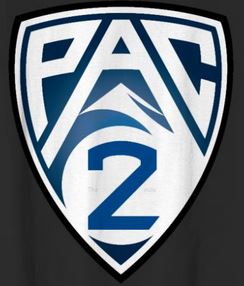Podcast: Play in new window | Download
Subscribe: RSS
Oh, no! Here we go again.
Yesterday, I read that the “Pac-12– 10 = Pac-2” Conference (Oregon State and Washington State) invited four new friends to make it a six-team conference beginning in fall 2026.

Current Mountain West Conference members Boise State, Colorado State, Fresno State, and San Diego State would join the Beavers and Cougars to create (at least for now) the new “Six-Pac” Conference.
As country music’s Jim Ed Brown first crooned in a 1967 song, it’s time to “Pop a top, again…” to celebrate the new “Six-Pac” Conference!

At least until they must become an eight-team conference, that is.
The NCAA demands that all major conferences must compete with at least eight member schools. This new “Six-Pac” Conference is a couple of bottles short of the NCAA’s required minimum.
Time-out! How did we get to this point?

The former Pac-12 Conference was effectively dissolved. First, USC and UCLA joined the Big Ten Conference beginning this fall. Oregon and Washington later bolted to join the Big Ten as well.
Arizona, Arizona State, Colorado, and Utah then took their marbles and walked away in favor of the Big 12 Conference beginning this fall.
Then, Cal and Stanford boarded jets to the Atlantic Coast Conference to make a total of ten teams which bailed out of their long-time conference beginning this fall.
Those ten schools vacated the Pac-12 after receiving significantly more money from the Big Ten, Big 12, and Atlantic Coast Conferences than their former league was able to offer.
That left the former Pac-12 Conference with only two remaining members – Oregon State and Washington State.

As a consolation prize, the courts allowed the remaining stalwarts of the Pac (12-10=2) to keep the Pac-12 Conference name AND (more importantly) millions of dollars which were paid by the ten teams as exit fees. The ten deserters were required to pay a lot of money to break away from their former conference and move into their more upscale neighborhoods.
Now flush with cash, the Pac-2 holdovers wisely cut a short-term deal to schedule games with a geographically close major athletic conference. The benevolent Mountain West Conference agreed to allow Oregon State and Washington State to schedule six football games this season against some of its member schools.

Looking ahead, there is currently no such “friendly” agreement in place for the 2025 football season.
The “new” Mountain West will slim down but pocket a lot of money!
On Thursday, the Pac-2 Conference announced that four members of the current Mountain West Conference will join the league two years from now in the fall of 2026.

One report indicated that the Mountain West Conference will pocket an estimated $110 million in exit fees from Boise State, Colorado State, Fresno State, and San Diego State Universities.
That will leave the Mountain West (at least for now) with the following eight institutions:
Air Force Falcons
Hawaii Rainbow Warriors
Nevada Wolf Pack
New Mexico Lobos
San Jose State Spartans
UNLV Rebels
Utah State Aggies
Wyoming Cowboys
The Mountain West must remain at least eight schools if it wants to maintain NCAA certification as a major athletic conference.
Shh…Be vewwy quiet. It’s Hunting Season once again!

Which two schools will the new “Six-Pac” Conference target to become an eight-team league?
They have already bagged their top four targets from the Mountain West. That means two more teams must be “negotiated” to leave their current leagues to come play in the renewed Pac “Who knows?” Conference.
The prime suspect appears to be teams from Conference USA.

In the past 11 years, this league has seen most of its long-time members bolt for other conference affiliations – primarily the American Athletic Conference (AAC) and Sunbelt Conference.
The defectors include 2013 schools like UCF, University of Houston, Memphis, and SMU. East Carolina and Tulsa left C-USA in 2014. In 2022, Marshall, Old Dominion, and Southern Miss hit the road for the Sunbelt Conference. Finally, 2023 saw UAB, Florida Atlantic, UNC-Charlotte, North Texas, and UT-San Antonio leave Conference USA to join the AAC.
Conference USA recently added Kennesaw State University (who dat?) in suburban Atlanta beginning this fall. Embarrassingly, C-USA is going to play most of its October college football schedule on Tuesday and Thursday nights. The lure of television money and exposure now overrides sensibilities and the desires of alumni and other supporters to watch home games on weekends in October.
The bigger question is, “Who’s NOT ready to leave Conference USA?”

The University of Texas at El Paso is now the longest tenured C-USA member since 2005. UTEP and New Mexico State (which just joined Conference USA in 2023) are both on the westernmost outposts of this far-flung athletic conference.
The Aggies and Miners would love to pocket more television money and exposure from the “Six-Pac” (or even the Mountain West Conference) than Conference USA is now providing.

One negative to bringing both schools into the “Six-Pac” (or Mountain West) is their common television market. Both UTEP and New Mexico State are a part of the #91-ranked El Paso/Las Cruces television market.
Texas State University (Sunbelt Conference) would be quite enticing for the “Six-Pac”

The school formerly known as Southwest Texas State University became a member of the Sunbelt Conference in 2013. Located in San Marcos, Texas, it is situated between two large television markets in #31 San Antonio and #35 Austin.
The Texas State Bobcats football program has been on the upswing in the past two years. The ‘Cats went to their first bowl game last season as they finished with an 8-5 record.
On Thursday night, Texas State played Big 12 (and former Pac-12 member) Arizona State very tough before falling 31-28 in a nationally televised game on ESPN.
The Sunbelt Conference (current home of Texas State) has been growing in national stature over the past few years. James Madison University, Coastal Carolina, Appalachian State, and UL-Lafayette have been nationally ranked college football teams during the past five years.
The “Six-Pac” Conference could slot Texas State and either UTEP or New Mexico State to fill its two openings.
Don’t forget Louisiana Tech University! They might be willing to move west, too.

Did you remember that Louisiana Tech was once a member of the Western Athletic Conference (WAC) for a dozen years from 2001 through 2013? After that point, the Bulldogs joined a better geographic fit in what was a highly competitive Conference USA.
The Bulldogs are not a good geographic fit for either the “Six-Pac” or Mountain West Conferences.
However, the school may be ready to bolt Conference USA as the league’s national prestige keeps shrinking. The Shreveport television market is ranked #89 – similar to the El Paso TV market. However, the incremental travel costs would make Louisiana Tech a less attractive potential affiliate than Texas State, UTEP, and New Mexico State.
IF…Texas State decides to leave the Sunbelt Conference and move west, Louisiana Tech should quickly move to take their place in the Sunbelt. Other long-term Conference USA mates such as Middle Tennessee, Western Kentucky, and Florida International would likely covet that Sunbelt spot, too.
Is a mid-major merger coming?

Conference USA is likely to see one or more of its teams leave in this new round of college musical chairs. Likewise, the Mountain West Conference will drop from 12 teams to just eight in two years. Both leagues desire to survive in the long-term.
C-USA should discuss a merger with the Mountain West Conference. A 16-team combined league could feature an Eastern division of C-USA schools and a Western division comprised of Mountain West members. It makes sense for both conferences to minimize travel for their member schools and avoid becoming two costly transcontinental (coast-to-coast) leagues.
Buckle up! The latest round of this game is just beginning.

